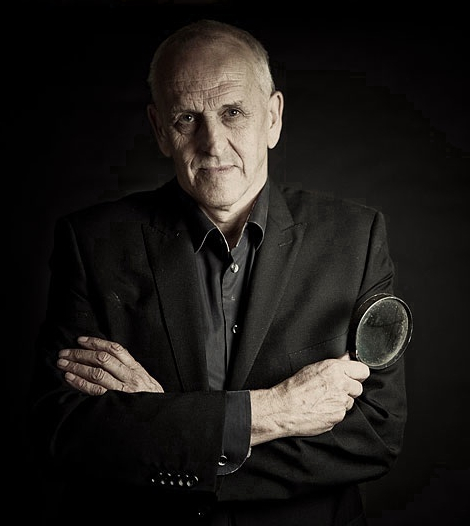British micro-artist, Graham Short, aged 68, has worked as the Royal engraver since 1974. His one-man business supplies Buckingham Palace, Windsor Castle, Balmoral and Sandringham with their hand engraved stationery.
Several years ago he found fame by carving the Christian ‘Lord’s Prayer’ on the head of a pin.
He then went on to engrave the words ‘Nothing is Impossible’ along the sharp edge of a razor blade.
He was determined to produce a religious item which would be the smallest piece of art the world has ever seen. It took him four months to engrave the Sikh symbol, The Khanda, on the actual point of a needle.
He says, “I chose The Khanda because it reflects the fundamental concepts of Sikhism, which should apply to all religions. The double edge sword in the centre represents divine knowledge, with its sharp edges carving Truth from Falsehood. And of course, The Chakkar (the circle in the middle), without a beginning or end, symbolizing the perfection of God, who is eternal. The two curved swords symbolize the equal emphasis that a Sikh must place on spiritual aspirations as well as obligations to society. I can’t think of a religious symbol that comes anywhere near The Khanda in terms of giving us something to aspire to. It is an honour and a privilege for me to have worked on this piece.”
“I am inspired by The Harmandir Sahib in the city of Amritsar, I haven’t yet visited The Golden Temple, but hope to, one day. I have read all about it and I see it as the most stunning and influential building in the world. The gurdwara is surrounded by the Sarovar, a large lake. This picture alone is worth a thousandd words.”
The engraving, on the point of the needle, is invisible to the naked eye and can only be viewed through a powerful microscope and is smaller than a red human blood cell.
The Birmingham artist works at night to avoid vibration from any passing traffic. “If a lorry passes 200 yards away I can feel it through the microscope.”
Taking Potassium, Magnesium and Beta-blockers to lower his heart rate, he wears a stethoscope to monitor his heart, then engraves between heart beats. “I can get my heart rate down to about 25 beats a minute. Swimming helps a lot. I swim 10,000 metres a day. The fitter I am, the lower my resting heart rate.”
Every few months he undertakes a course of Botox around his eyes. “This keeps my muscles and nerves surrounding my eyes from being a distraction while I’m working, but it wears off after a couple of months or so,” he says.
Graham Short –
graham.short@freeuk.com






